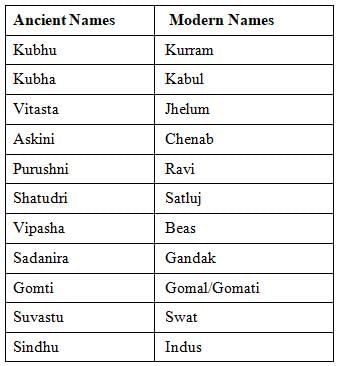Test: History - 9 - UPSC MCQ
25 Questions MCQ Test - Test: History - 9
Consider the following statements regarding 'Natya Shastra':
1. It is a treatise on art of drama, dance and music.
2. It is written by Bharat Muni. Which of the statements given above is/are correct?
1. It is a treatise on art of drama, dance and music.
2. It is written by Bharat Muni. Which of the statements given above is/are correct?
Which of the following is not correct with reference to Virashaivism?
Which of the following is not one of the causes of decline of Mauryan empire?
Consider the following statements in the context of Khayal or Khyal music:
1. The musical compositions of khyal are called qawwalis.
2. Poorabi is the slower variety of khyal and the Punjab style is the faster variety of khyal.
3. Origin of Khayal was attributed to Amir Khusrau. Which of the statements given above is/are correct?
Building ‘Lotus Mahal’ and 'Mahanavmi Dibba' was a notable feature in the kingdom of
Consider the following statements with respect to Sittanvasal paintings:
1. These paintings were patronized by the Pandyas.
2. These paintings were done on the ceilings of Buddhist shrines.
Which of the statements given above is/are correct?
Consider the following statements regarding iqta system:
1. Iqtas were administered by Muqtis.
2. Iqtas were made hereditary by Sultan Firoz Shah Tughlaq.
Which of the statements given above is/are correct?
Consider the following:
1. Steatite
2. Bronze
3. Terracotta
Which of the material given above were used for Harappan figures/ sculptures?
Consider the following historical temples:
1. Sun temple, Konark
2. Dashavatara Vishnu temple, Deogarh
3. Virupaksha temple, Mysore
Which of the above is/are the Nagara style temple?
Which of the following statements about Alauddin Khilji is correct?
Consider the following pairs: Pottery Period
1. Painted grey ware : Rigvedic period
2. Ochre colored pottery : Neolithic period
3. Northern Black Polished ware : Harappan period
Which of the pairs given above is/are correctly matched?
Consider the following statements about Rashtrakutas:
1. The posts of the village headmen and village accountant were generally hereditary.
2. There was complete abolition of feudal administration.
Which of the statements given above is/are correct?
Which of the following features characterize the pre-Mauryan (6th century B.C to 4th century B.C) period in north India? 1. Punch marked coins 2. Guild system 3. Paddy transplantation technique Select the correct answer using the code given below.
Consider the following pairs: Ancient names Modern names (Rig vedic rivers)
1. Parushini : Jhelum
2. Vipasha : Beas
3. Askini : Chenab
Which of the pairs given above is/ are correctly matched?
Consider the following statements with reference to the Kailash temple at Ellora:
1. It is the largest monolithic structure in the world.
2. The large panel of Sheshashayi Vishnu can be found inside the temple.
3. In many respects, it resembles the rathas at Mahabalipuram.
Which of the statements given above is/are correct?
Consider the following statements:
1. Charvaka was the main expounder of this philosophy.
2. The philosophy is materialistic in nature.
3. It showed lack of belief in other worlds and denied the existence of the supernatural agency.
Which of the following philosophies does the above statements refer to?
Which of the following statements given below about the post-Mauryan period is correct?
Which of the following social and educational reforms was/were introduced by Akbar?
1. He completely prohibited the practice of sati throughout the Mughal empire.
2. He legalized widow remarriages.
3. He revised the educational syllabus to lay more emphasis on secular subjects.
Select the correct answer using the code given below.
Consider the following statements with reference to Zamindars under Mughals:
1. They had the hereditary right of collecting land revenue.
2. They owned all the lands comprising his zamindari and the peasants had no rights on the land.
3. They were prohibited from maintaining an armed contingent due to fear of rebellion.
Which of the statements given above is/are correct?
With reference to the economic history of medieval India, the term 'Rahat' refers to
Which of the following constitute the famous "Trinity of Carnatic music"?
In this, tales from Mahabharata are sung as a ballad and one or two episodes are chosen for the night’s performance. The main singer continuously sits throughout the performance and with powerful singing and symbolic gestures he assumes all the characters of the episode one after another. Which of the following regional music is described in the above passage?
“They asserted themselves in the Mysore region about the beginning of the 12th century. The temples they built at Halebid and Belur look like lace work in stone. A splendid example of their sculptural art is portrayed in the carving showing Lord Krishna holding aloft the mountain Goverdhana to save the inhabitants of Gokul from the wrath of Indra.” Who among the following are being described by the above passage?
Consider the following statements with respect to Jizyah in Delhi Sultanate:
1. Hindu subjects were subjected to Jizyah as a tax paid in lieu of military service by the sultan and armies.
2. Jizyah was separated from land revenue by Alauddin Khilji.
3. Jizyah was imposed on Brahmins, who were earlier exempted, by Firoz Shah Tughlaq.
Which of the statements given above are correct?
Consider the following statements in the context of the rule of Nandas:
1. Alexander invaded North-Western India during their reign.
2. Chandragupta Maurya overthrew Dhanananda to establish Mauryan rule.
3. Pliny, a Roman writer estimated the army of Nanda dynasty.
Which of the statements given above is/are correct?















